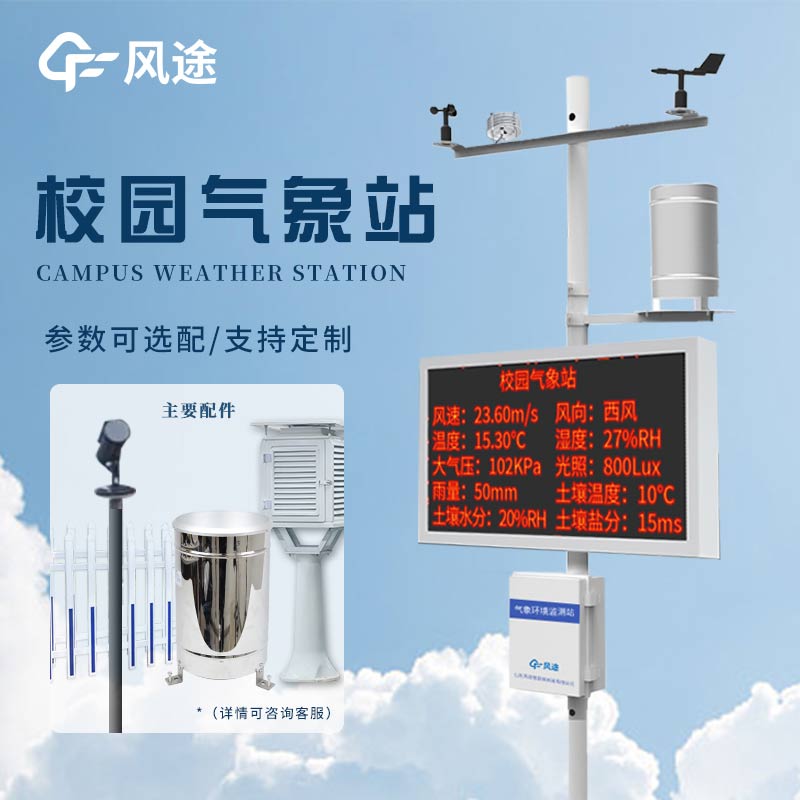Meteorological environment monitoring equipment supplier
Insist on doing high-precision customer favorite technology products
School weather station is a meteorological equipment installed in schools, used for real-time monitoring and recording of meteorological parameters such as temperature, humidity, wind speed, wind direction, and precipitation. It provides a practical learning platform for students, enhances scientific literacy, and supports environmental education and research.
So how can the School weather station be integrated into curriculum teaching? Here are several methods summarized by the editor.
Interdisciplinary learning:
Combine geography, physics, and biology courses to let students understand the scientific principles behind weather phenomena.
In math class, students can analyze meteorological data and conduct statistics and chart making.
Scientific experiments:
Design experiments to test the impact of different variables (such as temperature, humidity, and wind speed) on plant growth or energy consumption.
Through long-term data collection, study seasonal changes and climate change.
Project-based learning:
Let students be responsible for the maintenance and management of the weather station to cultivate their sense of responsibility and teamwork ability.
Organize students to carry out projects, such as predicting weather patterns or analyzing extreme weather events.
Environmental education:
Use weather station data to discuss the importance of environmental protection and sustainable development.
Explore how to address climate change by reducing energy consumption.
Technology and engineering:
Teach students how to use the technology of the weather station, including data acquisition, sensor calibration, and troubleshooting.
Encourage students to design and build their own simple weather stations or improve existing equipment.
Data analysis:
Teach students how to collect, organize, and analyze meteorological data to improve their data processing ability.
Use weather station data to establish and verify prediction models.
Health and physical education:
Discuss the impact of engaging in physical activities under different weather conditions, such as the impact of temperature and humidity on athlete performance.
Use meteorological data to plan physical education courses and activities.
Creative writing and art:
Encourage students to create stories or poems based on weather station data, adding scientific elements to literary creation.
Use meteorological data to inspire artistic creation, such as painting or sculpture.
Community participation:
Let students share the weather station's data with the local community to increase public awareness of weather and climate.
Organize community activities such as weather observation days or environmental education seminars.
Competitions and exhibitions:
Hold competitions for interpreting meteorological data inside and outside the school to stimulate students' competitive spirit.
Encourage students to display their meteorological research projects in science exhibitions.
Through these methods, the School weather station can become a powerful tool for teaching, helping students combine theoretical knowledge with practical operations and improve their scientific literacy and innovation ability.
